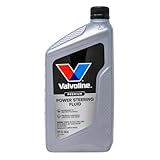Color Of Power Steering Fluid
Ever wondered what the color of power steering fluid should be? This guide will walk you through everything you need to know about power steering fluid color, its significance, and what to do if it’s not looking right.
Power steering fluid is a vital hydraulic fluid
that assists in turning your vehicle’s steering wheel. It’s a specially formulated fluid designed to withstand high pressures and temperatures, ensuring smooth and effortless steering. Imagine trying to steer a large ship without power assistance – that’s essentially what you’d be doing without proper power steering fluid. The fluid transmits pressure from a pump to a hydraulic cylinder, which in turn moves the steering mechanism. Different vehicles utilize various types of power steering systems, including hydraulic, electro-hydraulic, and electric power steering. However, the role of the fluid remains consistent: to provide lubrication, facilitate pressure transfer, and prevent corrosion within the system. This pressure transfer is key to smooth, responsive steering, especially crucial at low speeds, or when maneuvering in tight spaces like parking. Think of it as the lifeblood of your vehicle’s steering system; its properties and condition directly impact the steering feel and overall performance. A compromised fluid can lead to stiff steering, noises, or even complete steering failure.
The Importance of Correct Power Steering Fluid Level and Condition
Maintaining the correct color of power steering fluid and level is essential for optimal steering performance and the longevity of your vehicle’s power steering system. Low fluid levels can lead to air entering the system, resulting in noisy operation and reduced steering assist. Over time, the fluid breaks down due to heat, friction, and contamination. This breakdown leads to a change in the fluid’s properties and its color, becoming darker and eventually losing its effectiveness. Regular checks of the fluid level and condition are crucial for preventing major repairs or unexpected breakdowns. Remember, power steering failure can happen at the worst possible moments, like when you’re trying to avoid an accident or navigate a busy intersection. Hence, regular maintenance, including fluid checks, is a proactive measure to ensure safe and reliable vehicle operation. Neglecting this can lead to expensive repairs, compromising both your safety and the lifespan of your vehicle. It’s a small price to pay for peace of mind and safety.
Types of Power Steering Fluids and their Characteristics
There are several types of power steering fluids, each with its specific properties and characteristics. These variations are often determined by the type of power steering system used in the vehicle. Some are mineral-based, others are synthetic, and some are even specifically designed for use with certain vehicle manufacturers. The most common types include Dexron, ATF (Automatic Transmission Fluid), and specific manufacturer-recommended fluids. Each type has a unique formulation, including additives for protection against wear and tear, corrosion inhibitors, and viscosity modifiers to ensure the fluid performs optimally under varying temperatures and pressures. Using the wrong type of power steering fluid can damage the power steering system, leading to costly repairs. Always refer to your vehicle’s owner’s manual to identify the correct type of power steering fluid for your specific make and model. Getting the type wrong can be a costly mistake. Choosing the right one is as important as maintaining the proper color of power steering fluid.
The Telltale Signs: What the Color of Power Steering Fluid Reveals
Interpreting the Color: From Fresh to Failing
New power steering fluid typically exhibits a translucent reddish or amber hue. This indicates that the fluid is fresh and contains its full complement of additives. However, as the fluid ages and degrades, its color changes. The fluid will start to darken, eventually turning brown or even black. This darkening signals the breakdown of the fluid’s additives and the presence of contaminants. The degree of darkening is an indication of the extent of degradation; a darker color suggests a greater need for fluid replacement. It’s important to note that the rate of color change depends on several factors, including usage frequency, operating temperature, and contamination. Regular inspections and fluid changes are essential to maintain the proper color and performance of the power steering fluid.
Contamination and its Impact on Fluid Color and Performance
Contamination of power steering fluid can also significantly alter its color and impact its performance. Contaminants can range from debris and metal particles from the power steering system to water ingress. Contamination often results in a cloudy or milky appearance of the fluid. Metal particles can cause abrasive wear, leading to the premature failure of the power steering components. Water contamination can cause corrosion and lead to system malfunction. The presence of contaminants can accelerate the degradation of the fluid, further impacting its color and its ability to lubricate and transfer pressure effectively. Regular fluid changes and maintenance checks are necessary to minimize the risk of contamination and maintain the proper color of power steering fluid.
Recognizing Unusual Colors: What they Mean
Unusual colors in the power steering fluid indicate potential problems and should be addressed promptly. A milky, cloudy appearance is usually a sign of water contamination. A dark brown or black color is an indication that the fluid is badly degraded and needs immediate replacement. In some cases, the fluid might even exhibit metallic particles. These particles suggest excessive wear within the power steering system and require immediate attention from a mechanic. Ignoring these signs can lead to more significant issues that can be costly to fix. A thorough inspection of the power steering system is necessary to identify the root cause of the unusual color of power steering fluid and address the underlying problem.
Power Steering Fluid: Maintenance and Replacement
Checking the Power Steering Fluid Level
Checking the power steering fluid level is a relatively simple procedure. Most vehicles have a reservoir for the power steering fluid, often located under the hood. The reservoir usually has markings that indicate the minimum and maximum fluid levels. Before checking the level, make sure the vehicle is parked on a level surface and the engine is turned off. Locate the reservoir and carefully inspect the fluid level. If the level is low, add the correct type of power steering fluid, as specified in your owner’s manual. Never overfill the reservoir, as this can cause problems.
The Power Steering Fluid Change Process
Changing the power steering fluid is recommended at regular intervals. The frequency varies depending on the vehicle and usage conditions. Refer to your owner’s manual for recommended change intervals. However, changing the fluid is relatively straightforward. It involves draining the old fluid from the reservoir and the power steering system, then refilling with fresh, clean fluid. A power steering fluid flush is a more thorough process that ensures complete removal of old, contaminated fluid. This usually involves using specialized equipment. While many DIY enthusiasts attempt fluid changes, a professional flush is often a safer and more effective way to maintain a clean, optimally functioning power steering system. A professional can also check for leaks or other issues during the service.
Power Steering System Diagnostics
If you notice any unusual issues with your power steering system, such as stiff steering, noises, or leaks, it’s crucial to have the system professionally diagnosed. A mechanic can use diagnostic tools to identify the source of the problem, whether it is low fluid levels, worn components, or more serious issues. Ignoring a problematic steering system can lead to unsafe driving conditions and potentially serious accidents. Prompt diagnosis and repair are essential for maintaining safe and reliable vehicle operation. Early detection can often prevent a small problem from escalating into a major and costly repair.
Troubleshooting Power Steering Issues
Identifying and Addressing Leaks
Power steering fluid leaks are a common problem that can lead to low fluid levels and poor steering performance. Leaks can occur at various points in the power steering system. Identifying the leak involves carefully inspecting the hoses, seals, and connections for any signs of leakage. If a leak is identified, repair is necessary. This may involve replacing damaged hoses, seals, or even a component of the power steering system itself. Small leaks may be addressed with simple repairs. However, larger leaks may require professional attention. Prompt repair of leaks is essential to prevent further damage and ensure the safe operation of your vehicle.
Understanding Power Steering Whining Noises
A whining noise from the power steering system often indicates low fluid levels or a problem with the power steering pump. Low fluid levels should be addressed immediately by adding the correct type of power steering fluid. If the noise persists after adding fluid, the power steering pump may be faulty and require replacement. It’s recommended to have a mechanic diagnose the cause of the noise to prevent further damage to the power steering system. Neglecting a persistent noise can lead to more significant problems, possibly causing complete failure of the steering system.
Diagnosing Stiff or Difficult Steering
Stiff or difficult steering can result from low power steering fluid levels, a problem with the power steering pump, or a problem with other components within the steering system. Check the fluid level first and add fluid if necessary. If the steering remains stiff, professional diagnosis is necessary to determine the root cause of the problem. Ignoring stiff steering can make driving unsafe and dangerous, especially at low speeds or in tight spaces. A thorough inspection by a qualified mechanic is highly recommended to ensure the safety and reliability of your vehicle’s steering system.
Factors Affecting Power Steering Fluid Color and Lifespan
Operating Temperature and its Influence
Operating temperature significantly influences the color and lifespan of power steering fluid. High operating temperatures accelerate fluid degradation and breakdown, leading to a darkening of the fluid’s color. Extreme heat can cause the fluid to lose its viscosity and effectiveness, resulting in poor steering performance. Proper cooling and regular fluid changes are essential to minimize the impact of high temperatures on the fluid’s condition. Prolonged exposure to extreme heat can quickly degrade the fluid and necessitate more frequent replacements.
The Role of Driving Habits and Conditions
Driving habits and conditions can also impact the color and lifespan of power steering fluid. Aggressive driving, frequent low-speed maneuvering, and off-road driving can all contribute to faster fluid degradation. Regular driving under extreme conditions, such as prolonged exposure to heat or cold, can also affect fluid performance and color. Proper maintenance and regular fluid changes are especially important for vehicles subjected to harsh driving conditions. Adjusting your driving style to be more cautious can positively impact the lifespan of your fluid.
The Impact of Contaminants
Contaminants, such as water, dirt, and metal particles, can significantly affect the color and lifespan of power steering fluid. These contaminants can accelerate fluid degradation, resulting in a darkening of the color and reduced effectiveness. Regular inspections and fluid changes are essential to minimize the impact of contaminants. Regular inspections of the power steering reservoir can often allow you to detect contamination before it causes significant problems.
Power Steering Fluid vs. Other Automotive Fluids
Differentiating Power Steering Fluid from Other Hydraulic Fluids
It is crucial to distinguish power steering fluid from other hydraulic fluids used in your vehicle. Power steering fluid is specifically formulated for the power steering system and is not interchangeable with other fluids, such as brake fluid or transmission fluid. Using the wrong fluid can damage the power steering system, leading to costly repairs. Always consult your owner’s manual to determine the correct type and specification for your vehicle’s power steering system. Using the incorrect fluid is potentially dangerous and may invalidate any warranty coverage.
Understanding the Differences and Avoiding Cross-Contamination
The differences between power steering fluid and other fluids lie in their chemical composition and properties. Power steering fluid needs to withstand high pressures and temperatures while providing adequate lubrication. Cross-contamination of power steering fluid with other fluids can compromise the performance of the power steering system and potentially damage other critical components in your vehicle. This is why it’s vital to always be careful when working on your vehicle’s fluid systems. Using the proper tools and techniques can help prevent this.
Consequences of Using Incorrect Fluids
Using the wrong type of fluid can lead to numerous problems, including poor steering performance, reduced effectiveness, damaged components, and costly repairs. In severe cases, it can even lead to complete steering system failure. Always prioritize using the recommended fluid as specified by the vehicle’s manufacturer to maintain safe and reliable steering. Using the wrong fluid can even void your vehicle’s warranty.
Frequently Asked Questions
What color should power steering fluid be?
New power steering fluid is typically a clear, light reddish or amber color. As it ages and degrades, it darkens, becoming brown or even black. A milky or cloudy appearance indicates water contamination, which should be addressed immediately. Learn more about diagnosing power steering fluid color changes.
How often should I check my power steering fluid?
It’s a good practice to check your power steering fluid level at least once a month, or more frequently if you notice any unusual steering behavior or noises. Consult your owner’s manual for recommended check intervals. Learn more about maintaining your power steering system.
What happens if I use the wrong type of power steering fluid?
Using the incorrect type of power steering fluid can severely damage your power steering system. It can lead to poor performance, component failure, and ultimately, costly repairs. Always use the fluid specified by your vehicle’s manufacturer. Learn more about selecting the correct power steering fluid.
What causes my power steering fluid to turn dark?
Darkening power steering fluid is a sign of degradation and contamination. Factors like age, high operating temperatures, and the presence of contaminants contribute to this color change. Regular fluid changes are essential to prevent this. Learn more about factors affecting power steering fluid lifespan.
How much does a power steering fluid change cost?
The cost of a power steering fluid change varies depending on your location, the type of service (fluid change or flush), and your vehicle. You might find DIY options, but professional service is often preferable for thoroughness and safety.
Can I add power steering fluid myself?
Yes, you can usually add power steering fluid yourself. However, it’s important to use the correct type of fluid, as specified in your owner’s manual, and not overfill the reservoir. For more extensive work, such as a full fluid change or flush, professional service is generally recommended.
My power steering fluid is leaking. What should I do?
If your power steering fluid is leaking, it’s crucial to locate the leak and address it promptly. This could involve repairs to hoses, seals, or other components. If you are unable to locate the leak, take your vehicle to a qualified mechanic for diagnosis and repair.
Final Thoughts
The color of power steering fluid is a critical indicator of its health and the overall condition of your vehicle’s steering system. Regularly checking the fluid level and observing its color can help prevent costly repairs and ensure your safety on the road. Remember, a simple fluid change can often avert major problems down the line. While many tasks can be DIY, don’t hesitate to seek professional help when you need it. Your steering system is crucial for your safety, so maintain it properly. Regular maintenance, including fluid checks and timely replacements, is your best investment in safe and reliable driving. Keep an eye on that fluid, and enjoy the ride!

David Peterson, the chief editor of sparepartscare. I am an automobile engineer and assign to an local firm with much experience in automobile equipment. During the time, most of my experience is related to the Industry of cars parts. I learned about the thing, when working with experienced inspectors, one must be as good as the inspector, or better, with knowledge of the project as well as the practical aspects of automobile industry.









